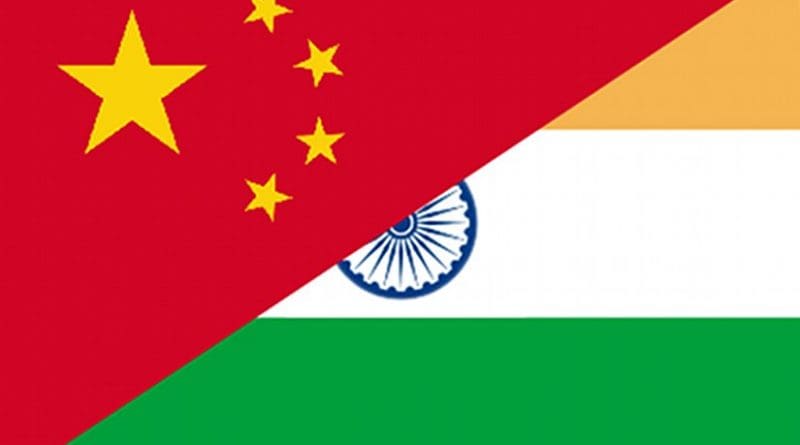India-China Economic Engagements In A Global Context – Analysis
By Dr. Ram Upendra Das and Dr. Reena Marwah
There are various layers of India’s economic engagements with the rest of the world, including in the region. These together have important implications for India-China bilateral economic pursuits.
Prime Minister Modi’s visit to China is being analysed in different quarters and the trend will remain so in examining the specifics. However, India-China relations in general and economic relations in particular, would have to be placed in an overall context. While the context would determine the bilateral, the converse would also be true.
With a GDP rate of growth of 7% in 2014-15 and envisaged to grow at 7.5% and more in the coming fiscal year, the Indian growth trajectory is visibly vibrant. India’s footprint is expanding – not in terms of territorial expansion or maritime circumcising, but in terms of its emergence and visibility as a responsible partner of the developing world, and an engine of growth in the regional and global arena.
There are various layers of India’s economic engagements with the rest of the world, including in the region. These together have important implications for India-China bilateral economic pursuits. First and foremost, is the South Asian region which is followed by India’s Act East Policy. But the engagements cannot stop at that. India’s economic linkages with the Central and West Asia are important, too. Beyond this are the imperatives of more intensive partnerships in Africa and Latin America, alongside the Caribbean region. On the other hand, with India’s economic dynamism, one must not lose sight of its economic dialogue with the developed world. Each of these need serious consideration.
India’s immediate neighbours in South Asia are the most crucial partners. They both need each other and going by the Indian civilizational ethos India has always believed in shared prosperity. To assess the above, it would be useful to question, at the outset, if India has been a responsible partner to neighbouring countries in South Asia? India has remained one of the most important trade partners of the SAARC members. It has also provided duty free access to goods of five countries of the SAARC. A rather little known fact has been that the trade relations with Pakistan have made substantive progress since the joint statement between the two countries in 2011 with Pakistan moving from positive list of imports from India to negative list. India reciprocated with relaxing restrictions on investment from Pakistan. More recently, the land settlement between India and Bangladesh can only augur well for the business sentiments in the two countries. With Sri Lanka, Nepal and Bhutan, India has already forged closer and stronger economic ties as the statistics would suggest. In Afghanistan, India’s presence in terms of development assistance is quite well-known.
India’s humanitarian assistance to Nepal, Bangladesh, Sri Lanka, and Maldives during times of natural disasters like the earth-quake, tsunami etc. have always been appreciated. As Prime Minister Modi rightly articulated during the 18th SAARC Summit at Kathmandu (2014) “India’s vision for the region rests on five pillars – trade, investment, assistance, cooperation in every area, contacts between our people – and, all through seamless connectivity. There is a new awakening in South Asia; a new recognition of inter-linked destinies; and, a new belief in shared opportunities.” By no means are such pronouncements mere words.
In terms of India’s Act East Policy, the comprehensive economic partnership agreements with Japan, South Korea, Malaysia, Singapore and ASEAN have remained building blocks for a larger Asian economic integration under the aegis of Regional Economic Cooperation Agreement (RCEP) within the ASEAN+6 configuration. However, the shared prosperity must extend to countries in the extended neighbourhood of East Asia to cover Cambodia, Laos, Myanmar and Vietnam (CLMV) countries as these countries provide avenues to evolve Regional Value Chains (RVCs), of which India could be an active part. The Eagle must not abandon the next door Nest country i.e. Thailand which is strategically positioned to be a bridge for India to Act East. A comprehensive agreement with Thailand including trade in goods, trade in services and investment would deepen the economic linkages with this ‘culturally-similar-bridge-country’. In addition, negotiations with Indonesia, Australia and New Zealand must also be completed so as to make India a pro-active economic player in the RCEP negotiations. This is crucial for two prime reasons: first, since this would be an important arrangement to interact with China, especially in terms of setting the rules of the game while maintaining ‘ASEAN centrality’; and second, because RCEP assumes special meaning for both India and China in the wake of mega-economic groupings such as TPP and TTIP of which both are not members. The FTAAP under APEC remains elusive for India as it is still not part of APEC, which in any case has not much to show as any meaningful success in concrete economic terms.
India along with other SAARC members can serve as an economic hub connecting the East and South-east Asian sub-regions with Central and West Asian regions to tap the economic, energy and natural resource complementarities. On the other hand, China is actively present in major sectors of significance be it in South Asia, East and South-East Asia or Central Asia. Similar, is the case in terms of economic presence of China in Africa and Latin America / Caribbean. Moreover, India and China interact closely in BRICS, AIIB, G-20 and in climate change negotiations and at the WTO.
It is this wider canvas, in which India-China economic engagements need to be painted. Nevertheless, India cannot wish away deeper economic cooperation with the US and major economies in the EU. May be new efforts for a new global reconfiguration is needed that includes Japan, United States, Russia, India and China (JURIC) which sets a new global economic order along with the EU. If at all, India-China economic engagements need to be constructed in this new economic ambience.

